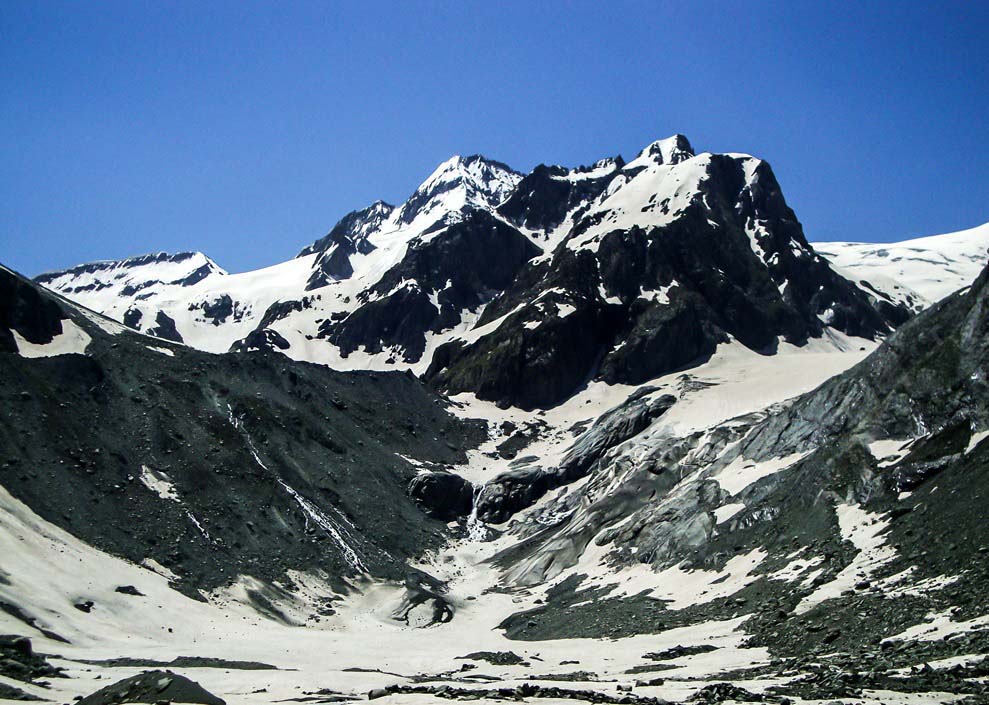
Srinagar- Jammu and Kashmir figures at the third slot among Indian Himalayan Region (IHR) states with a vulnerability index of 0.62, as revealed in a comprehensive study conducted by the Department of Ecology, Environment, and Remote Sensing, Government of Jammu & Kashmir.
The report, titled “An Assessment of Inherent Vulnerability to Climate Change in Jammu & Kashmir,” a copy of which lies with Kashmir Observer, highlights the vulnerability status of J&K at the national level and within the context of the Indian Himalayan Region (IHR).
The study identified and categorized the most vulnerable districts in J&K with respect to India and IHR along with the major drivers of vulnerability. A team of scientists led by Dr. Majid Farooq along with Dr. Fayma Mushtaq, Mudasir Dada, Ubaid Yousuf and Zubair Malik carried out the study in all the districts to know the climate vulnerabilities
Based on this assessment, over eleven districts of Jammu and Kashmir are under high risk of climate vulnerability, and require immediate adaptation and interventions to mitigate risks.
Among the eleven districts, eight belong to the Kashmir region, while three are from the Jammu region. The districts, namely Kupwara, Bandipora, Baramulla, Budgam, Ganderbal, Pulwama, Anantnag, Kulgam, Kishtwar, Ramban, and Doda, fall under the high category (0.49-0.59) of climate vulnerability.
The report reveals that in terms of agricultural vulnerability of the districts, Bandipora, Ganderbal, Srinagar, Pulwama, Anantnag, Shopian, Kulgam, and Reasi fall under relatively high vulnerable categories (0.47-0.53).
“This means these districts are more vulnerable than others, requiring prioritized adaptation interventions,” the study reads.
A set of 14 indicators of vulnerability was used in the assessment capturing both ‘sensitivity’ and ‘adaptive capacity’ of districts.
The report further revealed that people with extremely low incomes are among the most vulnerable, as they have little to no financial capital; so, they have the least capacity to adapt to the impacts of climate risks.
According to the experts, assessing vulnerability to climate change is important as it helps to understand climate risks and provides information on the location specific measures to be taken to adapt to climate change.
“Hence, a vulnerability assessment is the first step in adaptation planning,” the experts said, in the study, adding that this project was initiated to inform the policymakers of J&K on the vulnerability profiles of different districts using a common assessment framework.
“The present assessment has used the Intergovernmental Panel on Climate Change (IPCC) 2014 ‘Risk and Vulnerability Framework’ as the base of such a common framework, which is a clear improvement over the IPCC-2007 framework,” the experts said.
The report emphasized that the excessive utilization of natural resources will result in climate variability.
“Climate variability and change directly affect the productivity of natural resources. Any alteration in the quality and availability of natural resources will have far reaching implications on resource users and the extensive social and economic systems they support. Thus, higher dependency on natural resources for income generation increases vulnerability,” the report says.
It further highlights that Horticulture trees are hardy and more resilient to climate variations compared to agricultural crops.
“They provide alternative income sources to agriculture. Once established, they are far less sensitive to the impacts of climate risks, particularly rainfall variability and droughts (IHCAP, 2019),” it says.
Follow this link to join our WhatsApp group: Join Now
Be Part of Quality Journalism |
Quality journalism takes a lot of time, money and hard work to produce and despite all the hardships we still do it. Our reporters and editors are working overtime in Kashmir and beyond to cover what you care about, break big stories, and expose injustices that can change lives. Today more people are reading Kashmir Observer than ever, but only a handful are paying while advertising revenues are falling fast. |
| ACT NOW |
| MONTHLY | Rs 100 | |
| YEARLY | Rs 1000 | |
| LIFETIME | Rs 10000 | |











